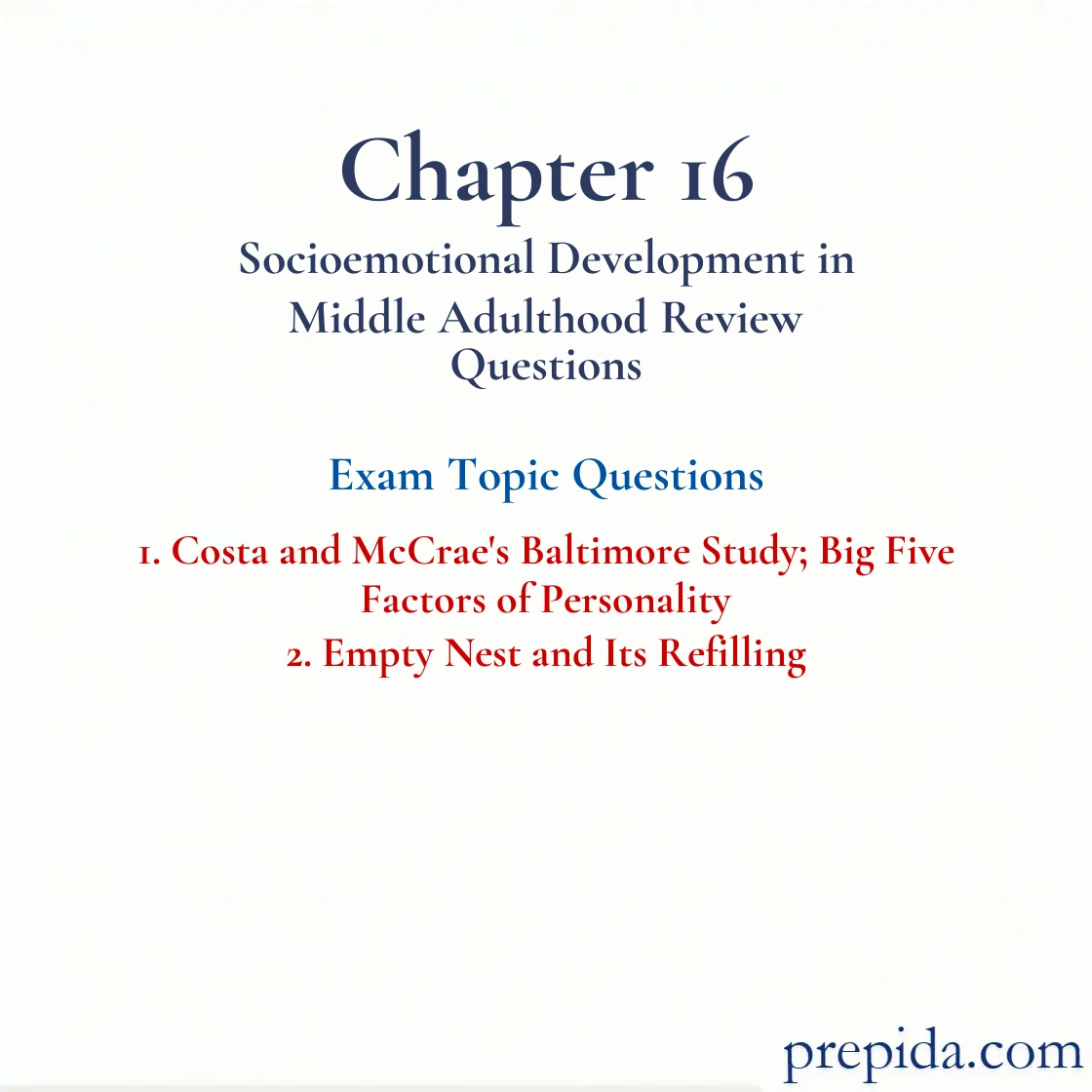
Jason's friends describe him as softhearted, trustworthy, and helpful. According to the Big Five factors of personality, Jason is most likely to score high on
- conscientiousness.
- openness to experience.
- agreeableness.
- extraversion.
Big Five Factors of Personality: Emotional stability (neuroticism), extraversion, openness to experience, agreeableness, and conscientiousness.
Becky is careless, impulsive, and disorganized. According to the Big Five personality factors, Becky is most likely to score low on
- openness to experience.
- agreeableness.
- neuroticism.
- conscientiousness.
Conscience: An internal regulation of standards of right and wrong that involves integrating moral thought, feeling, and behavior.
Carla is described by her coworkers as highly organized and meticulous. She has a strong sense of self-discipline. According to the Big Five factors of personality, Carla is most likely to score high on
- openness to experience.
- extraversion.
- conscientiousness.
- agreeableness.
Conscience: An internal regulation of standards of right and wrong that involves integrating moral thought, feeling, and behavior.
Which of the following is one of the Big Five factors of personality identified by Costa and McCrae?
- enthusiasm
- patience
- adaptability
- conscientiousness
Conscience: An internal regulation of standards of right and wrong that involves integrating moral thought, feeling, and behavior.
Diana is fun-loving, sociable, and affectionate with all her friends and acquaintances. Identify the Big Five personality factor that describes this aspect of Diana's personality.
- extraversion
- conscientiousness
- neuroticism
- agreeableness
Centration: Focusing attention on one characteristic to the exclusion of all others.
Matt and Sandra are not letting go of their children even though the children are now adults and are earning enough to live on their own. Matt and Sandra are engaging in
- bulldozer parenting.
- helicopter parenting.
- boomerang parenting.
- permaparenting.
Coparenting: Support parents provide for each other in jointly raising their children.
Caleb has decided to leave college and return to live at home with his parents. He is on the cusp of
- young adulthood.
- adolescence.
- middle adulthood.
- midlife.
Emerging Adulthood: The transition from adolescence to adulthood (occurring from approximately 18 to 25 years of age), which is characterized by experimentation and exploration.
Angelo and his wife just had their last child move out of the house. He and his wife had lived vicariously through their children, letting their sports activities and various achievements dominate their lives. Now, they may experience ________, which includes a decline in marital satisfaction after children leave the home.
- life dilemma
- chronic discontent
- the empty nest syndrome
- alienation
Empty Nest Syndrome: A decrease in marital satisfaction that occurs after children leave home, because parents derive considerable satisfaction from their children.
Which of the following statements is true of the empty nest syndrome?
- Parents who live vicariously with their children do not experience it.
- It is more common in middle-aged men than for middle-aged women.
- It is a common, though minor, problem for most middle-aged adults.
- It involves a decline in marital satisfaction after children leave the home.
Empty Nest Syndrome: A decrease in marital satisfaction that occurs after children leave home, because parents derive considerable satisfaction from their children.
Katie, a 30-year-old woman, is working as a freelance writer. Recently, she decided to move in with her parents. However, both Katie and her parents are facing adjustment issues. According to research, which of the following is most likely a common complaint voiced by both Katie and her parents?
- a lack of social interaction
- a lack of career development
- an increased strain on finances
- a loss of privacy